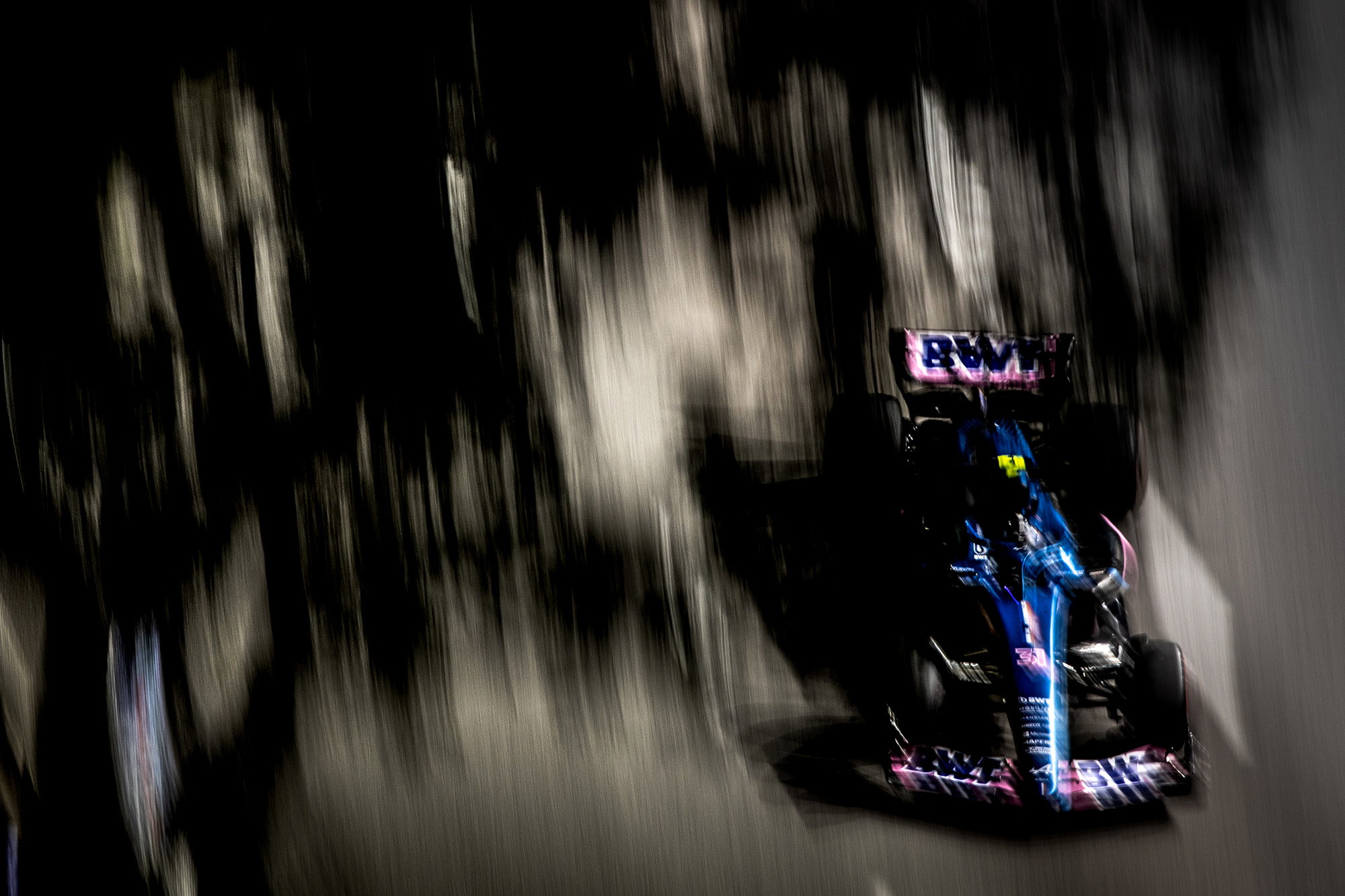Up Next

Formula 1 enters the second year of its power unit freeze in 2023, but despite engine performance being locked in there are still ways for teams and manufacturers to make gains.
Though it won’t lead to dramatic improvements, given how similar the performance is across the four manufacturers the opportunities could still be significant.
As Alpine executive director Bruno Famin, head of the engine base in Viry-Chatillon in France that produces the Renault power unit, explains, while you cannot directly improve the performance there are “very small margins” where packaging can be improved.
The nine frozen parts of the power unit and related items are the V6 engine, turbocharger, MGU-H, MGU-K, energy store, control electronics, exhaust system, fuel and engine oil, with the deadlines for the final specification kicking in variously in March and September last year. That means these cannot change for the remainder of the current rules cycle, which runs to the end of 2025.
“There is no real margin to be honest because, by rule, you cannot improve the performance of the engine,” said Famin when asked how much margin there is for improving the power unit.
“What we can do is try to improve the performance of the car, and the possibility we still have as per the regulation is the packaging.
“For example, we can imagine changing the inlet line or exhaust line to allow our colleagues from Enstone to make better aerodynamics.

“This is where we are working. We’re working of focus in the use of the energy management, but here again we are going to be very limited as we’re going to have only one software version per year now. We are pushing like that, but it’s more on the on the drivability.
“We are going through the ideas to progress, which is very small margins. It’s not pure performance, it’s more drivability and integration/aero gains.”
The regulations also allow for what are called “minimal incidental changes” to be made, but these are tightly controlled and only apply to seven areas. This is defined as “for car installation purposes”.
These apply to wirings, the exhaust system (“provided the key defining parameters remain fundamentally unchanged”, the turbo-compressor position (“within 20mm from the original position relative to the ICE”) as well as turbo clocking and turbo supports, the position of wastegates with housings and pipes, the position of the pop-off valves housing and pipes and minor details of the air inlet system.
While none of these make a massive difference, they can be used to make tiny tweaks to the packaging of the power unit for potential marginal performance gains.
The other area where engine performance can improve is through better reliability. This will not only reduce the chances of retirements or problems compromising weekends, but would also allow the power unit to be run more aggressively.
The regulations permit changes to homologated power unit parts “for the sole purposes of reliability, safety, cost saving”, as well as the aforementioned minimal incidental changes.
To be allowed to change these, the manufacturer must make a written application to the FIA technical department with supporting information such as evidence of failures and planned changes. All rivals are then notified of these changes.

Renault, Ferrari, Mercedes and Red Bull (Honda) all made multiple such requests last year. Alpine made changes to its water pump after Fernando Alonso’s retirement in the Saudi Arabian Grand Prix, although that didn’t solve the problems that it hopes have been fixed for this year.
Famin suspects that the FIA will be less lenient in granting changes for reliability reasons in 2023 and emphasises that such changes can lead to performance gains in how you can run parts.
“What is a pure, genuine reliability issue?” said Famin when asked by The Race if there were concerns that changes might not be made for genuine reliability issues rather but to exploit the rule for improved performance.
“Then, behind the reliability issue you often have a potential performance gain, of course. The limit is not exactly always super clear.
“If you have a water pump issue, as we had in ‘22, it’s quite clear it’s a pure reliability issue, there is nothing to gain in having a better or different water pump.

“If need to change the material of the piston rings, OK, you will be able to have something stronger to have more performance, then where is the limit? It’s not obvious.
“The process in 2022 with the FIA and the other PU manufacturers has been quite good, it has been transparent at least in that everybody was aware of the request and this is very good. It has been well managed by the FIA.
“Now I am expecting the FIA to be a bit stronger in the future. It has been quite tolerant in ‘22 and I think it was quite normal because everybody was affected by a reliability issue. We had 30, 40, 50, 70 requests from the different manufacturers. Then everybody was affected by this kind of problem.
“I am expecting the FIA to be a bit stronger in the future, but I have no new information.”
While all the power unit manufacturers will inevitably have details of their power unit package locked in by the homologation regulations that they would ideally tweak, Alpine believes the architecture of the Renault E-Tech engine is well-optimised.
According to technical director Matt Harman, this gives the team the opportunities it needs to maximise the overall aerodynamic performance of the car and reflects the big gains made in integration of what is one of only three full-blown works teams in F1.
It also rewards the team being aggressive with the specification of its 2022 power unit given it needed to make gains. This includes the switch to the split turbo concept pioneered in F1 by Mercedes in 2014, as it, like all manufacturers, focused on ensuring no performance was left on the table given the potential to fix reliability problems later.
“There are some very minor things,” said Harman when asked by The Race if there were any limitations in the power unit architecture that would ideally be changed. “But we worked on that architecture very early on and I was very clear on what we needed from that.
“We’ve delivered on absolutely everything, which is one of the reasons why we had to make that decision on prioritising performance over some of the reliability aspects.
“That has enabled us to have the freedom and the space in the car for the next ‘x’ number of years to express ourselves.
“And that is in a number of areas of heat rejection, in volumetric packaging, in stiffness and all the things that we’ve worked on over the last few years.
“Viry have done an absolutely fantastic job of achieving that architectural step, because it was a very large one from them. If you’ve seen pictures of the power unit and compare that to the previous [pre-2022] one, you’ll see what I mean. They really have done a fantastic job.”
Alpine launches its 2023 car in London on February 16.





